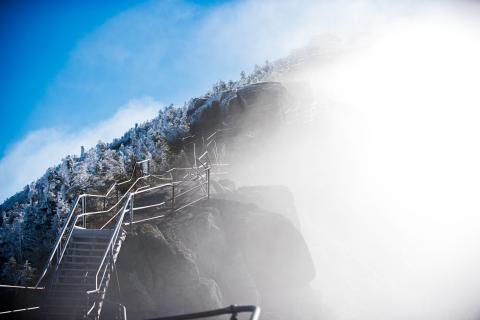The Adirondack Mountains are more than 5,000,000 years old and are a monument to the shifting, irrepressible powers of the last ice age. Towering above New York's diverse landscape, the Adirondacks detail a history when small alpine glaciers carved their way through what is now the Adirondack Region, and glacial erratics - stones deposited by the glacier - were scattered across the landscape. Massive chunks of ice broke away from the glacier, and were buried beneath sand and gravel washed from the ice. As these ice chunks melted, depressions, called kettle holes, were formed. When a kettle hole extended below the water table, a pond was created. Many of the small, circular ponds you see while hiking in the high peaks began as kettle holes.
Over millennia, as glaciers carved away the landscape, mountains began to take shape. Unlike the Rockies and the Appalachians, the Adirondack Mountains do not form a connected range, but rather a 160-mile wide dome of more than 100 peaks. Although the mountains are formed from ancient rocks more than 1,000 million years old, geologically, the dome is a newborn. Because of this, the Adirondacks have been referred to as "new mountains from old rocks." It is theorized that there is a "hotspot" beneath the region, which causes continued uplift at the rate of 1.5-3 cm annually.
The Adirondack Peaks can be anywhere from 1,200 feet tall to well over 5,000 feet tall, and the 46 tallest summits above 4,000 feet are called the High Peaks. Although four peaks were later discovered to measure less than 4,000 feet, they are still considered part of the High Peaks region.
The highest mountain of them all is Mount Marcy, towering 5,344 feet above sea level. It is one of the most distinctive features of the Adirondack landscape. Mount Marcy is home to Lake Tear of the Clouds, the highest lake in New York State at 4,292 feet, and the source of the Hudson River.




